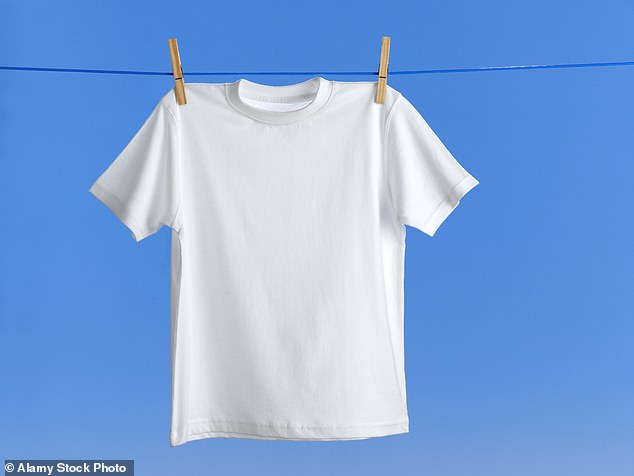It is a commonly held belief that the more expensive a garment the more likely it is to last longer.
But researchers claim that it really does not matter how much you spend when it comes to durability.
The most expensive T-shirt tested by the University of Leeds Institute of Textiles and Colour (LITAC) and environmental group Wrap was outperformed by one costing just a 30th of its price.
The study concluded that the amount paid has ‘very little’ to do with the resilience of most T-shirts sold in the UK and that spending more money does not guarantee the item will be more hard-wearing.
Some 47 men’s and women’s T-shirts from UK clothing brands were tested.
They washed the items using a standard mixed 30C wash cycle followed by a tumble dry 50 times. The T-shirts were graded for pilling – when small balls form on the surface of an item – as well as colour fading, shrinkage and general appearance.
Of the top ten best performing garments, six cost less than £15 each, outperforming many expensive tees including the most expensive at £395, which ranked 28th. A £4 T-shirt was 15th.
The more hard-wearing tops tended to have some synthetic fibres in the composition, such as polyester.

It is a commonly held belief that the more expensive a garment the more likely it is to last longer – but researchers have now said that may not be the case (Stock Image)

Some 47 men’s and women’s T-shirts from UK clothing brands were tested – they were washed using a standard mixed 30C wash cycle followed by a tumble dry 50 times (Stock Image)
Cotton items seemed to have higher shrinkage than synthetic ones – yet four of the ten top garments were 100 per cent cotton.
LITAC’s Dr Eleanor Scott said: ‘If circularity in fashion is to be truly effective, durability must come first.
‘Durability underpins the reuse and resale market, as well as keeping our loved items in use longer.’
Kate Baker, from LITAC who presented the findings to a conference in Denmark, said: ‘Improved clothing durability is critical for the future of circularity and providing the opportunity for people to wear the clothes they love for longer.’












